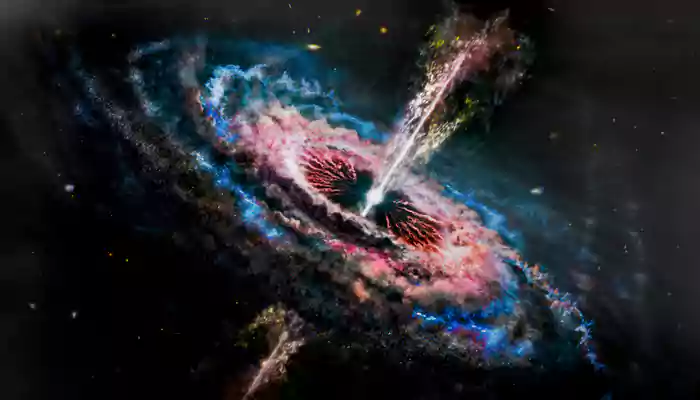Neutrinos: The Ghost Particles That Make Up Our Universe – What Are They Really?
When we think about the fundamental particles that constitute the universe, our minds often drift to protons, neutrons, and electrons.
- Akashdeep
- 23 August, 2024
- 2 mins ago

Neutrinos: The Ghost Particles That Make Up Our Universe – What Are They Really?
When we think about the fundamental particles that constitute the universe, our minds often drift to protons, neutrons, and electrons.
However, lurking in the shadows of these more familiar particles are neutrinos, often referred to as "ghost particles" due to their elusive nature. But what are neutrinos, and why are they so important in our understanding of the cosmos
Capturing the Ghostly Essence
Imagine a particle so small, so light, and so elusive that it can pass through entire planets without interacting with a single atom. These are neutrinos, one of the most abundant particles in the universe, yet one of the most mysterious. Every second, trillions of neutrinos pass through your body, unnoticed and undetected. Despite their ghostly reputation, neutrinos hold the key to many of the universe's deepest secrets.
What Exactly Are Neutrinos
Neutrinos are subatomic particles that belong to the lepton family, which also includes electrons. They are incredibly light, with masses so small that for a long time, scientists thought they might be zero. Neutrinos are electrically neutral, hence the name (derived from the Italian word "neutro," meaning neutral), and they interact with matter through the weak nuclear force, one of the four fundamental forces of nature.
There are three known types, or "flavours," of neutrinos: electron neutrinos, muon neutrinos, and tau neutrinos, each associated with their respective charged leptons. One of the fascinating aspects of neutrinos is their ability to change from one flavour to another, a phenomenon known as neutrino oscillation. This discovery was so groundbreaking that it earned the 2015 Nobel Prize in Physics.

The Origins of Neutrinos
Neutrinos are produced in various high-energy processes throughout the universe. One of the most significant sources is the nuclear fusion reactions that power the sun and other stars. In these reactions, protons fuse to form helium, releasing neutrinos as a by-product. This constant production of solar neutrinos bathes our planet in a never-ending stream of these particles.
Neutrinos are also produced in supernovae, the explosive deaths of massive stars. During a supernova, an immense amount of energy is released, and a significant portion of this energy is carried away by neutrinos. In fact, neutrinos are often the first sign of a supernova, arriving hours before the light from the explosion becomes visible.
On Earth, neutrinos are produced in nuclear reactors and during certain types of radioactive decay. Scientists also create neutrinos in particle accelerators to study their properties in controlled experiments.
Detecting the Undetectable
Given their elusive nature, detecting neutrinos is no small feat. Because they interact so weakly with matter, neutrinos can pass through vast amounts of material without leaving a trace. To catch these ghost particles, scientists have developed ingenious detectors, often located deep underground or underwater to shield them from cosmic rays and other sources of interference.
One famous neutrino detector is the Super-Kamiokande in Japan, a massive tank filled with 50,000 tons of ultra-pure water. When a neutrino occasionally interacts with a water molecule, it produces a faint flash of light, which is detected by thousands of sensitive photomultiplier tubes lining the tank. Another notable detector is the IceCube Neutrino Observatory, located at the South Pole, which uses a cubic kilometer of Antarctic ice to detect neutrinos.
Why Neutrinos Matter
Despite their ghostly nature, neutrinos play a crucial role in our understanding of the universe. They provide insights into processes that are otherwise hidden from view, such as the inner workings of stars and the dynamics of supernovae. Neutrinos also help us probe fundamental questions about the nature of matter and the forces that govern the cosmos.
In the end, the study of neutrinos is a testament to human curiosity and ingenuity. As we continue to chase these ghostly particles, we are reminded of the vast, unseen wonders of the universe, urging us to explore further and discover the secrets that lie beyond the visible spectrum.





